
|
|
|
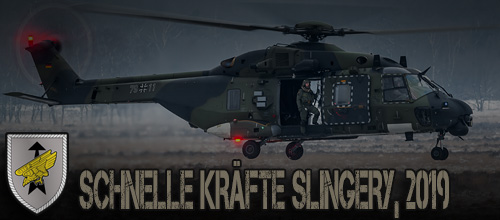
|
|
A Dutch-German Sling Training
Rigging Heavy Cargo at the Heath; Edese Heide, January 23, 2019
In order to be well prepared for the future deployments of the Dutch and German cooperation between the Airmobile Brigade and the Division Schnelle Kr채fte, joint training is regularly organized. In the fourth week of January 2019, the Dutch and German air supply units of the Division Schnelle Kr채fte trained together on the Edese Heide in the Netherlands. The goal of the training was to be able to operate with each other. This means working with each other's material and equipment and by training a joint NATO standard procedure.
|
|
|
|
|
4th Combat Aviation Brigade
The Ivy Eagle's from Colorado; Eindhoven, February 4 – 11, 2019
After a deployment of almost nine months in Europe , the 4th Infantry Division of the United States Army withdraws to the United States. The unit has operated in Eastern Europe in the context of Operation Atlantic Resolve. During this operation, the American military supports the European units at the European borders. The 4th Infantry Division is an infantry division of the United States Army and is based in Fort Carson in the state of Colorado. Fort Carson has traditionally been a mountain post of the army located southwest of Colorado Springs.
|
|
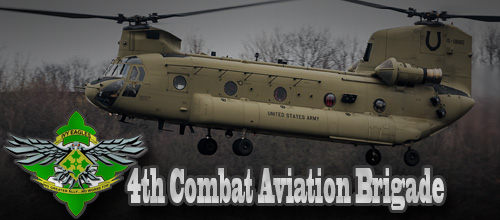
|
|
|
|
|
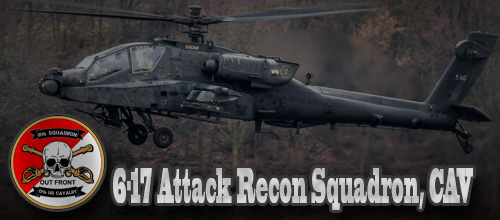
|
|
6th Attack Recon Squadron 17th Cavalry
The 6th Cavalry Squadron; Eindhoven, February 4 – 11, 2019
The soldiers of the 6th Attack Reconnaissance Squadron of the 17th Cavalry are deployed in Europe for nine months as part of the ongoing mission to deter potential Russian aggression. Operation Atlantic Resolve started shortly after the annexation of the Crimea by Russia in 2014 as support for the European partners. The cavalry is an equestrian people in an army and it is traditionally the name for the military unit which moved and fought on horseback. This is in contrast to the infantry who fights on foot and moves on foot on the battle field.
|
|
|
|
|
The Farewell of a Belgian Icon
Koksijde Rescue; Sea-King Farewell; Koksijde, March 21, 2019
The iconic Westland Sea King of the Belgian Air Force made for the very last time ever a landing at Koksijde Air Base in western Belgium on Thursday, March 21, 2019. After 42 years of operational service, the helicopter makes way for the new NH90 Caiman, which fully takes over the “Search & Rescue” (SAR) tasks. After more than 42 years of operational service, the Sea-King was finally retired from service. Ceremonies would be held throughout the day to symbolize the end of the Sea-King. The helicopters have made over 60,000 flying hours.
|
|
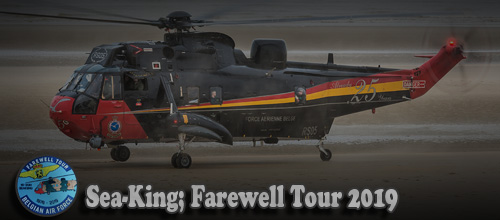
|
|
|
|
|
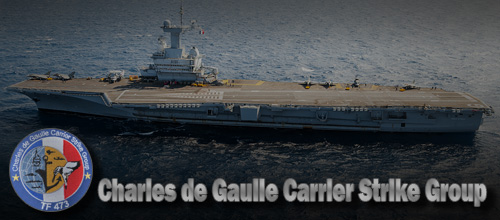
|
|
The Carrier Battle Group
Mission Clemenceau, part 1; Charles de Gaulle, March 25 & 26, 2019
A Carrier Battle Group consists of an aircraft carrier and a large number of escorting vessels. A Carrier Battle Group is one of the most powerful maritime weapons of our time. During Mission Clemenceau, the French aircraft carrier Charles de Gaulle and his battle group sails via the Mediterranean to the Indian Ocean. The Task Force that sails around the Charles de Gaulle consists of several ships which have different tasks. In addition to all the French ships along the CSG, the French Navy also works together in a international context.
|
|
|
|
|
Deployment During Mission Chammal
Mission Clemenceau, part 2; Charles de Gaulle, March 25 & 26, 2019
An important part of Mission Clemenceau was the deployment of Rafale aircraft in the fight against IS/ISIS/Daesh. The Charles de Gaulle was deployed in March 2019, to provide support from the sea during the French Mission Chammal against the terror caliphate in Syria and Iraq. Bombing missions against targets in Syria and Iraq were carried out from the sea with Marine Rafales. The most common missions are typical CAS missions (Close Air Support), DCA missions (Defense Counter Air) and Recce missions (reconnaissance flights).
|
|
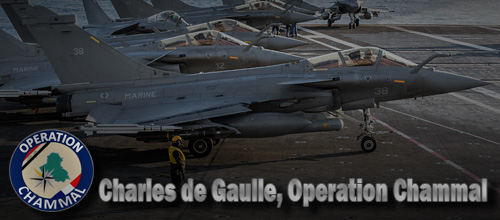
|
|
|
|
|
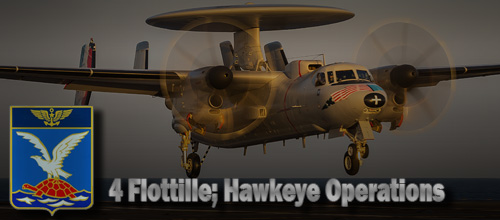
|
|
Surveillance with the Hawkeye
Mission Clemenceau, part 3; Charles de Gaulle, March 25 & 26, 2019
The French Navy has a total of three Grumman E-2C Hawkeye radar aircraft in use which can be deployed aboard the aircraft carrier Charles de Gaulle. These E-2Cs are important for the deployment of the Rafales and are used as a flying radar station. Two E-2C Hawkeye aircraft are available during Mission Clemenceau and Mission Chammal. The French Navy currently uses three E-2C Hawkeyes. These aircraft are assigned to the 4 Flottille. The planes are land based at Lorient/Lann-Bihoué in Brittany in western France.
|
|
|
|
|
Rafale Marine Operations at Sea
Mission Clemenceau, part 4; Charles de Gaulle, March 25 & 26, 2019
Preparations for Mission Clemenceau have started months before the cruise was started. The fighter pilots of the 12 Flottille and the 17 Flottille have taken part in exercises during the preparation and have again achieved their deck landing qualifications. They are ready for deployment after two months of preparation. Until the end of 2016, the 17 Flottille was operational with the Dassault Super Etendard. This aircraft is now completely replaced by the Rafale in the French Navy. The 17 Flottille currently consists of fifteen pilots aboard the CdG.
|
|
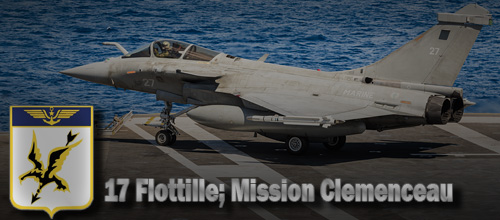
|
|
|
|
|
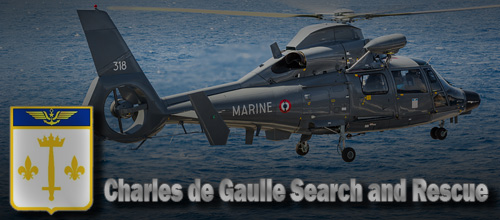
|
|
Helicopter Support on Board
Mission Clemenceau, part 5; Charles de Gaulle, March 25 & 26, 2019
In addition to the operations with the Rafale on board the Charles de Gaulle, there are also a number of helicopters on deck which are on standby to intervene. On the French aircraft carrier there are a number of SA365 Dauphin helicopters for SAR duties and an NH90 NFH Caiman for PR duties and anti-submarine tasks. The SA365 Dauphin is the primary SAR helicopter aboard the CdG. The crew of the Dauphin consists of four crew members during a typical SAR standby. The detachment of the 35 Flottille has two SA365 Dauphin's on board.
|
|
|
|
|
Danish Contribution to Task Force 473
Mission Clemenceau, part 6; Charles de Gaulle, March 25 & 26, 2019
During Mission Clemenceau, the French aircraft carrier Charles de Gaulle is guided by several ships from different partner countries in the Carrier Strike Group. For the Danish Navy it is the first time that a Frigate will sail along in a Carrier Strike Group. This Frigate is the Niels Juel, and has one EH101 Merlin on board. The Merlin is from the 722 Squadron which is based at the Danish airbase Karup. The most important objective for the Danes is the international partnership with the partner countries of Denmark like France and the French Navy.
|
|
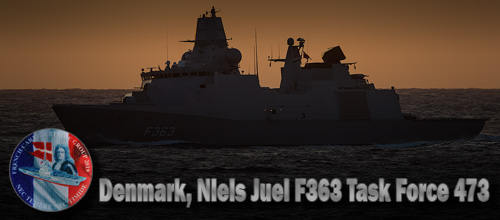
|
|
|
|
|
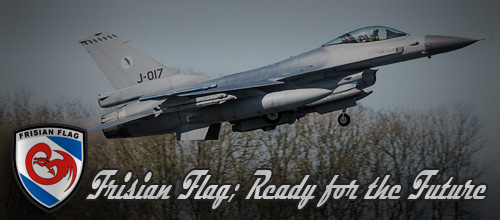
|
|
Practicing with the Eye on the Future
Frisian Flag 2019, part 1; Leeuwarden, April 1, 2019
Fighter pilots from different NATO and partner countries trained complex missions in an international context during Frisian Flag 2019 in the last two weeks. Over fifty aircraft took off from Leeuwarden Air Base in the Netherlands every day. Frisian Flag is an annual exercise that has become one of the largest in Europe. Today's missions are increasingly taking place in an extensive coalition context. The most important objective of the Frisian Flag exercise is to train participants in what is now the core of the expertise of a modern fighter pilot.
|
|
|
|
|
International Training with NATO Partners
Frisian Flag 2019, part 2; Leeuwarden, April 1, 2019
In addition to the Dutch participants, many international participants were involved during Frisian Flag. For example, the French with their Mirages have become a familiar face in Leeuwarden in recent years. The American Air National Guard is also a returning participant who came to Leeuwarden Air Base with F-16Cs. The F-16Cs are from the 179th Fighter Squadron (179 FS) which is part of the 148th Fighter Wing (148 FW). This unit is based at the American Duluth Airport in Minnesota where it is part of the Minnesota Air National Guard.
|
|
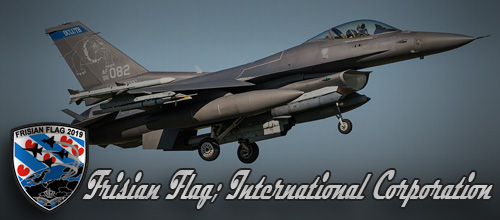
|
|
|
|
|
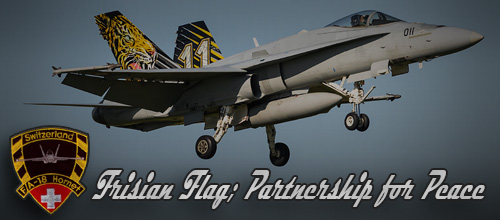
|
|
Partnership for Peace Participation
Frisian Flag 2019, part 3; Leeuwarden, April 1, 2019
A special participation in the Frisian Flag exercise at Leeuwarden Air Base this year was the participation of the Swiss Air Force with their F/A-18 Hornets. The Swiss are from Meiringen in the center of the country. Switzerland is not a NATO member state and therefore it’s not standard they are participating in Frisian Flag. In connection with the upcoming evaluation period for the new type of fighter aircraft of the Swiss Air Force, the Frisian Flag exercise was the only foreign exercise in which the Swiss Air Force could participate this year.
|
|
|
|
|
European Air Refuelling Training 2019
Practicing Air to Air Refuelling; Eindhoven, April 4, 2019
This year, the European Air Transport Command (EATC) at Eindhoven Air Base organized the tanker exercise European Air Refueling Training (EART) for the 6th year in a row. The tankers from different partner nations will fly daily missions from Eindhoven Air Base to refuel the combat aircraft participating in Frisian Flag 2019. The EART 2019 took place this time from Monday April 1st to Friday April 12th. During these two weeks, international parties will train intensively together to be ready for future European deployment in crisis areas.
|
|
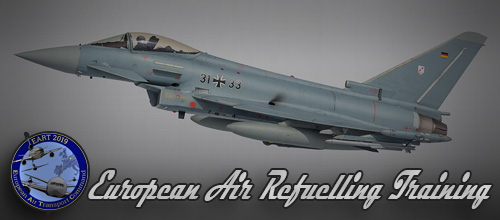
|
|
|
|
|
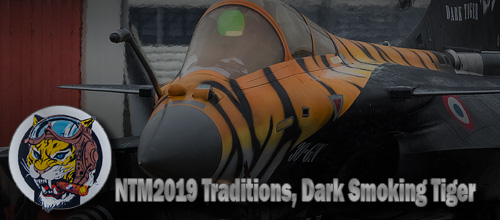
|
|
The Claws of the Dark Smoking Tiger
The NATO Tiger Meet 2019, part 1; Mont de Marsan, May 17, 2019
This year the NATO Tiger Meet took place at the French airbase Mont de Marsan in the south west of France. The French unit Escadron de Chasse 3/30 “Lorraine” was to host the Tiger Meet this year where international members will meet. The meeting is always surrounded by traditions where the team spirit is central. With the main goals of sharing experiences, increasing interoperability, exemplary values and team spirit as a guiding principle, the NATO Tiger Meet has developed into an important exercise within NATO in more than 50 years.
|
|
|
|
|
Objectives of the Tiger Meet
The NATO Tiger Meet 2019, part 2; Mont de Marsan, May 17, 2019
The NATO Tiger Meet is not only about the team spirit and the traditions which are being propagated. In addition to these social activities, it is also about training the tough reality of modern scenarios during various conflicts. Different scenarios are practiced daily in which two training waves a day are launched. One of the most important objectives of the NATO Tiger Meet is the exchange or transfer of knowledge between the different participating countries. This concept enhances interoperability between the participants.
|
|
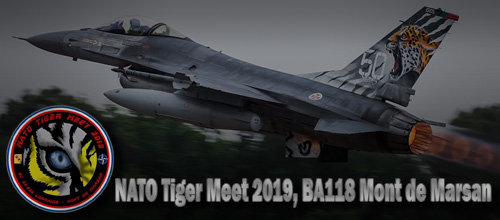
|
|
|
|
|
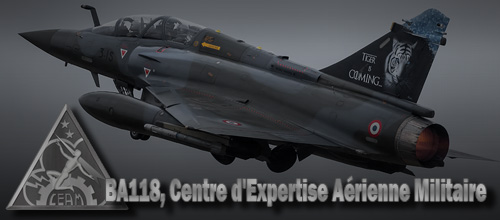
|
|
Knowledge Center of the Rafale
The NATO Tiger Meet 2019, part 3; Mont de Marsan, May 17, 2019
Mont de Marsan is nowadays the most important knowledge center for the Dassault Rafale deployment in France. Operational experiments with this type and the Dassault Mirage 2000D are performed daily at the airbase. There are also a few operational units on Mont de Marsan that are all part of Escadron de Chasse 30. The BA118 “Colonel Rozanoff” Air Force Base Mont de Marsan is nowadays regarded as one of the most important operational airfields of the French air forces and accommodates more than 66 operational units and many aircraft.
|
|
|
|
|
Musée Européen de l'Aviation de Chasse
European Museum of Fighters; Montelimar, May 20, 2019
In the city of Montelimar in eastern France is the Musée Européen de l'Aviation de Chasse or the European Fighter Aircraft Museum located. The museum is located at a small airport just outside the city of Montelimar. The museum was first opened in 1987 by a group who wanted to preserve the heritage of French Aviation and has since then built up a beautiful collection of mainly French fighters. As the name suggests, there are mainly combat aircraft in this museum. The aircraft are mainly French, but there are also aircraft from other air forces.
|
|
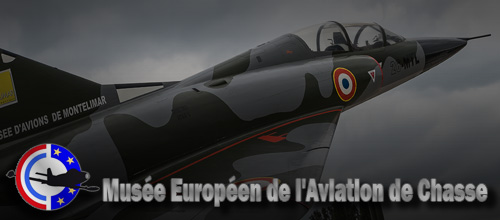
|
|
|
|
|
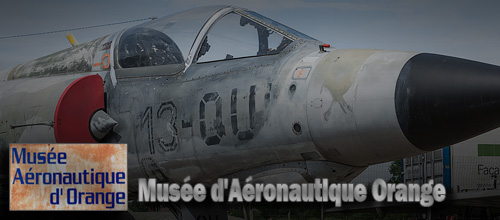
|
|
Musee Aeronautique d'Orange
Museum of the Fifth Squadron; Orange, May 20, 2019
The aviation museum in Orange is a small and very full and crowded museum which is located just outside the city of Orange in the vicinity of the airbase. The museum is operated by a group of aircraft enthusiasts who over the years have collected and exhibited French-made fighter aircraft. The planes are from the Cold War period until the contemporary era. The group that runs the museum is the Association of the Fifth Squadron (Association “Les amis de la 5eme escadre”). The aircraft are all very close together positioned.
|
|
|
|
|
Savigny les Beaune Museum
A Private Collection of Fighters; Savigny les Beaune, May 22, 2019
In the town of Savigny les Beaune there is a museum on the grounds of a large estate called Manoir de Savigny-lès-Beaune. The owner of this estate is a very elderly man who has built all kinds of collections during his life. The military aircraft are just one of his collections. He also has collections of fire trucks, tractors and scale models. The owner of this estate has amassed his fortune in the wine trade during the majority of his lifetime. There are more than 100 combat aircraft on display on the grass site of this well exposed museum.
|
|
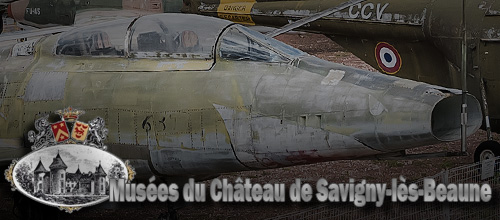
|
|
|
|
|
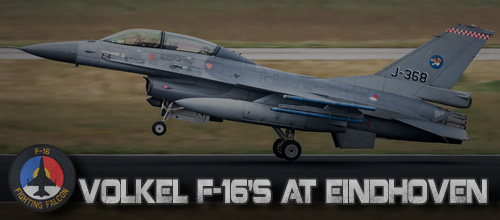
|
|
F-16’s Operate from Eindhoven
Volkel F-16s Operate from Eindhoven; Eindhoven, June 4, 2019
From Monday June 3, 2019, until Wednesday June 5, 2019, eight Dutch F-16s from Volkel Air Base flew daily from Eindhoven Air Base. At their home base Volkel, with a view to the Dutch Air Force Days, some necessary repairs were made to the main runway. The F-16s flew from the Mil East platform and would fly missions twice a day, just like at Volkel. In the past, F-16s from Volkel Air Base and Leeuwarden Air Base regularly came to Eindhoven Air Base to do out of area exercises in which planes flew from an airfield other than their own.
|
|
|
|
|
Different Generations Meet Each Other
Dutch Air Force Days 2019, part 1; Volkel, June 15, 2019
The Dutch Air Force Days, which this year was held for the first time in three years at Volkel Air Base, attracted a total of 240,000 spectators. This year, the Royal Netherlands Air Force has again invested in the Air Force Days, because they want to invest in the future of this branch of defense. The absolute stars of the airshow were the two Dutch F-35 Lightning IIs which were flown in from the United States. The good old F-16 was again in the spotlight during the show. The organization had the same budget this year as in previous years.
|
|
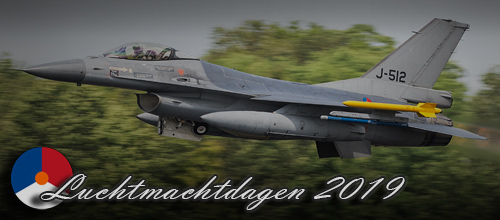
|
|
|
|
|
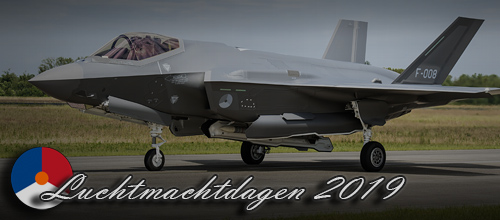
|
|
Invest in the Future of the Air Force
Dutch Air Force Days 2019, part 2; Volkel, June 15, 2019
With the purchase of the Lockheed Martin F-35A Lightning II, the Royal Netherlands Air Force has opted for a very modern fifth generation combat aircraft. The F-35 Lightning II is also an important aircraft for the Dutch economy, as many companies benefit from the supply contracts involved in the purchase of that aircraft. In the past, the F-16 has proved its worth for the Air Force in various scenarios around the world. Even in the coming decades, the Netherlands cannot live without a solid fighter plane to secure the country.
|
|
|
|
|
India and France practice Together
The French Indian Garuda VI, part 1; Mont-de-Marsan, July 10, 2019
In a period of more than two weeks in July 2019, the air forces of India and France would train together at BA118 Mont-de-Marsan in southern France. All aspects of modern warfare will be discussed during these intense weeks. The objective here is to make the two friendly countries work together even better. The Garuda VI exercise is a binational recurring exercise by the French and Indian Air Force that will be held in alternating countries every three to four years. The exercise marks the good cooperation between both countries India and France.
|
|
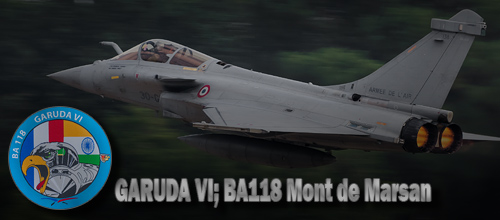
|
|
|
|
|
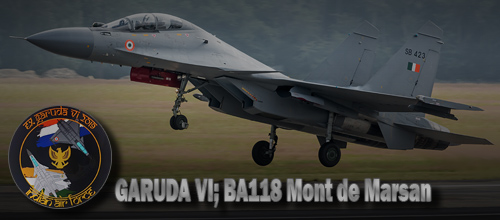
|
|
The Execution of Garuda Missions
The French Indian Garuda VI, part 2; Mont-de-Marsan, July 10, 2019
To be maximum prepared for the exercise in France, the Indians trained extensively before the pilots would travel to France with their fighters. The exercise would be built up in phases and in the last week complex and combined missions would be flown. Both countries learned a lot from each other during Garuda VI. Garuda is a very important exercise for the Indian Air Force in particular. The pilots from India do not fly as often against foreign opponents as the French are used to during the big exercises in Europe during NATO training.
|
|
|
|
|
The French Independence Day
The Defile at the Champ-Elysees, part 1; Evreux; July 14, 2019
Every year the French Air Force flies an important part of the Defile over the Champ-Elysees in the capitol of Paris during the Bastille Day on July 14. On this day, the French independence and freedom are celebrated. The French forces traditionally give a major military parade in Paris that shows the power of France. Every year in France on July 14 the storming of the Bastille is celebrated. This day symbolizes the start of the French revolution that led to the current French Republic. The French formation Patrouille de France flies during the parade.
|
|
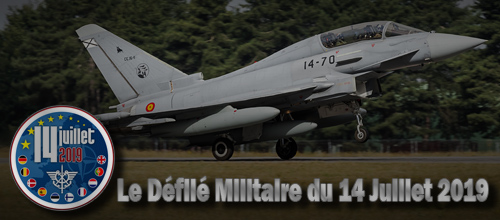
|
|
|
|
|
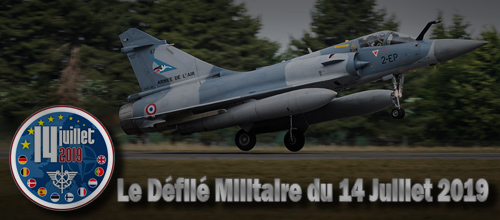
|
|
European Collaboration at the Defile
The Defile at the Champ-Elysees, part 2; Evreux; July 14, 2019
During the Air Force block, units from both the French Air Force and the French Navy fly along over Paris. Various combat aircraft and transport aircraft from the allied countries of France also fly along during the parade. These coalition countries of France are Belgium, Germany, Spain and the United Kingdom. Between the sixth and seventh air force block, two blocks from the French Navy were in the parade. Next to the Air Force, the navy is the only part that works with combat aircraft. These aircraft fly from the carrier Charles de Gaulle
|
|
|
|
|
Swedish Saab Draken at Volkel
An Historical Saab in the Netherlands; Volkel September 5, 2019
On September 5, 2019, a Swedish historical flight Saab Draken would make a landing at Volkel. The aircraft came by to refuel on its way to Zeltweg in Austria. The Saab would participate there in the Zeltweg Airpower which is the largest air show in Austria. The Saab J-35J Draken has flown for years with the Swedish Air Force as an air defense fighter and was replaced by the Saab JAS-39 Gripen at the beginning of this century. The aircraft arrived at Volkel at the end of the morning and would continue its way to Austria an hour later.
|
|
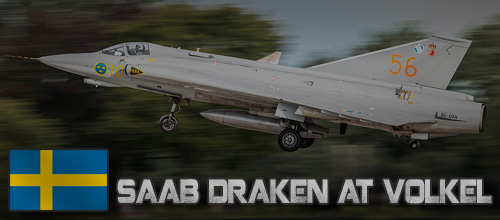
|
|
|
|
|
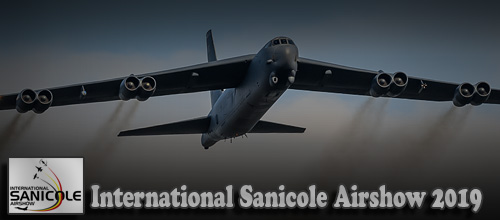
|
|
Sanicole Sunset Show
The Sanicole Airshow 2019; Leopoldsburg, September 13, 2019
This year the 41st edition of the International Sanicole Airshow took place on September, 13 and 15. The air show is traditionally held at Leopoldsburg airport in the northern part of Belgium. In addition to the civilian participants, the relations with the Belgian Air Force are also clearly visible in the airshow flight program. The Sanicole air show at the airport of Leopoldsburg has grown over the years from a small event to a true spectacle. The International Sanicole Airshow is nowadays the most important airshow that is held annually in Belgium.
|
|
|
|
|
Market Garden Memorial
75 Years Market Garden, part 1; Eindhoven, September 21, 2019
Hoping to end the Second World War before the end of 1944, the British commander Bernard Montgomery launched Operation Market Garden in September 1944. The aim was to create a corridor by occupying the bridges in the Netherlands which would ensure that soldiers could invade Germany quickly and effectively. This operation was the main operation which took place in the Netherlands during the Second World War. Operation Market Garden was for the biggest part a failure, because the last bridge in Arnhem could not be occupied.
|
|
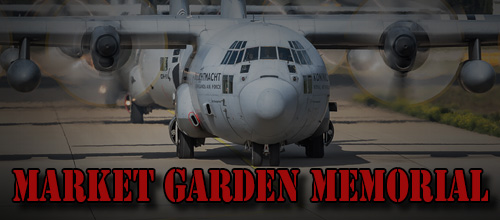
|
|
|
|
|

|
|
Commemoration of the Airborne
75 Years Market Garden, part 2; Eindhoven, September 21, 2019
Transport aircraft from various European countries and the United States would commemorate Operation Market garden on September 21, by means of a droppings over the Ginkelse Heide near Ede. Exactly 75 years ago this operation took place which eventually led to the liberation of a large part of the Netherlands. The Market Garden Memorial was set up largely this year by the organization. More than 1100 Red Barrettes from eight different countries would follow in the footsteps of their predecessors on Saturday September 21.
|
|
|
|
|
1st Combat Aviation Brigade in Europe
1st Combat Aviation Brigade, part 1; Eindhoven, October 14, 2019
The deployment of the 1st Combat Aviation Brigade of the 1st Infantry Division is the fourth division deployment in Europe in the context of Operation Atlantic Resolve. The unit would withdraw to the United States in October 2019. The unit will leave Europe via the port of Rotterdam and will be relieved by the 3rd Combat Aviation Brigade. Operation Atlantic Resolve is a military deployment in Europe. Although it is not a "real" military operation, it is an operation that means that many American units are stationed in Europe.
|
|
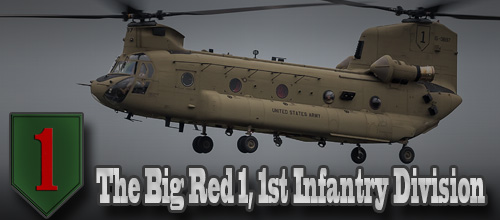
|
|
|
|
|
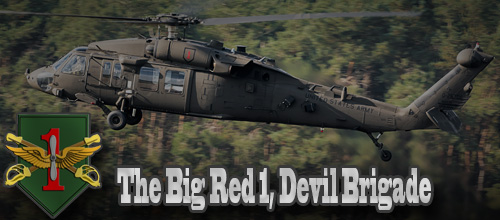
|
|
The Big Red One Devil Brigade
1st Combat Aviation Brigade, part 2; Eindhoven, October 14, 2019
As part of the European Operation Atlantic Resolve, the 1st Combat Aviation Brigade of the United States Army was active in Europe in 2019. The helicopters and many ground equipment arrived in the port of Zeebrugge in February 2019. In October 2019 the 1CAB would leave Europe via the port of Rotterdam. The United States 1st Infantry Division is a combined division of the United States Army and is the oldest continuous serving unit in the regular United States Army. The 1st Infantry Division is part of the American III Corps from Texas.
|
|
|
|
|
The Fighting Sixth Cavalry
1st Combat Aviation Brigade, part 3; Eindhoven, October 14, 2019
The most special aviation unit which is part of the 1st Combat Aviation Brigade, 1st Infantry Division, is the unit of the American Cavalry. The 1CAB has one Cavalry squadron, namely the 1st Squadron, 6th Cavalry. This Cavalry unit is also referred to as the Fighting Sixth in the United States Army and has an extended history. The 1st Squadron of the 6th Cavalry, is like the other units of the 1CAB, based on Marshall Army Air Field in Kansas. The Cavalry is an ancient part of the American army and dates back to the early years of the USA.
|
|
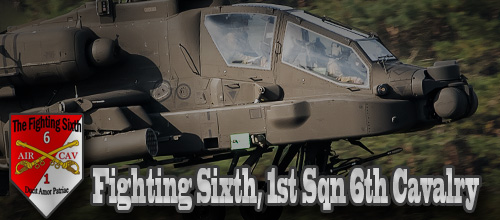
|
|
|
|
|
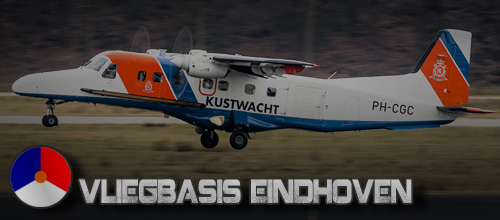
|
|
Military Movements Eindhoven
Eindhoven Air Base in 2019; Eindhoven 2019
Also this year Eindhoven Air Base was visited again several times. In addition to the exceptional visits of the American helicopters in February and October and a number of F-16 detachments to Eindhoven, the necessary EATC flights also passed by. The highlight of the year of these regular flights was the visit of a Slovakian Fokker 100. This aircraft is rarely seen in the Netherlands, making it a unique visitor to Eindhoven Air Base. This Fokker 100 is used by the government of the country to transport the officials of Slovakia.
|
|
|
|
|
Backbone of the Japanese Defense
Japanese Samurai Phantoms, part 1; Hyakuri, October 30, 2019
Over the years, the F-4EJ Kai has built up a great reputation in Japan. The Phantom fleet has been drastically updated over the years to the Kai standard. The type is currently in the last days of its career within the Japan Air Self Defense Force and will soon be replaced by the modern Lockheed-Martin F-35A Lightning II. The F-4EJ Kai has just like the other Phantoms in the countries that fly or have flown with this aircraft a great reputation. The Japanese Phantoms have formed the backbone of the Japanese Air Self Defense Force (JASDF).
|
|
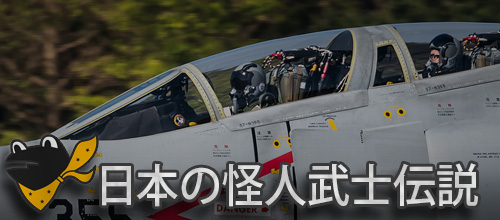
|
|
|
|
|
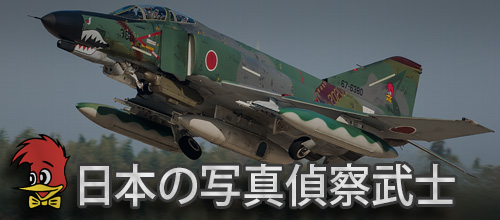
|
|
Japanese Photoreconnaissance Phantoms
Japanese Samurai Phantoms, part 2; Hyakuri, October 30, 2019
The most colorful Phantoms in Japan are the photo reconnaissance aircraft of the 501 Hikotai. This unit is the only Japanese squadron that flies with the photo reconnaissance variant of the McDonnell Douglas F-4 Phantom II. The history of the 501 Hikotai began in Matsushima on March 27, 1962. After more than 45 years in the service of the Japan Air Self Defense Force, the aircraft will be phased out at the in 2020. The tasks of this version of the legendary Phantom are taken over by the F-35 Lightning II by the usage of modern and sensitive sensors.
|
|
|
|
|
Phantom Pharewell in Japan
Japanese Samurai Phantoms, part 3; Hyakuri, October 30, 2019
The world-famous McDonnell Douglas F-4 Phantom II is currently still in full operation within the Japan Air Self Defense Force (JASDF). After 45 years of service with the Japanese Air Force, the Phantom is outdated and due for replacement. In Japan, the current Phantom fleet is at the end of his career within the Japan Air Self Defense Force. The successor to the Phantom will be the Lockheed-Martin F-35 Lightning II in Japan. The Phantoms have served with the Japanese Air Force for 45 years and have flown in eight squadrons in service.
|
|
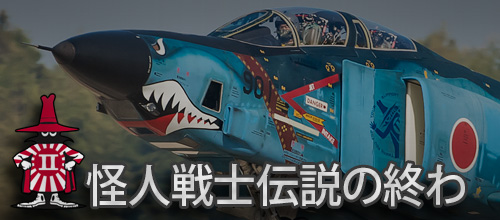
|
|
|
|
|
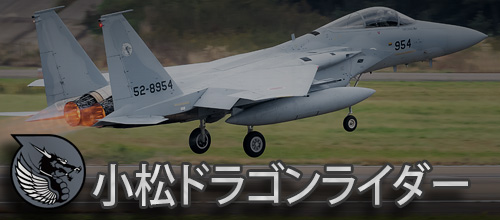
|
|
The Choice for the F-15J Eagle
Eagles for the Air Defense, part 1; Komatsu, October 29, 2019
The Mitsubishi F-15J Eagle is a frontline combat aircraft that can be used in all weather conditions. The aircraft is based on the design of the American F-15 Eagle and is used by the Japan Air Self Defense Force. The F-15J for the Japanese Air Force was produced under license by Japanese Mitsubishi Heavy Industries. The F-15J Eagle is the primary air defense fighter in Japan and is therefore the backbone of Japanese defense. The JASDF received a total of 165 F-15J single seat aircraft and 48 F-15DJ double aircraft with space for two pilots.
|
|
|
|
|
The F-15J Eagle in Operation Service
Eagles for the Air Defense, part 2; Komatsu, October 29, 2019
After the first F-15J Eagles were delivered to the Japan Air Self Defense Force, the aircraft quickly entered service with the first operational F-15 squadrons. In total, the Air Force of Japan would receive 213 F-15J/DJ Eagles. The Eagles would fly at eight operational squadrons and a special aggressor unit and a test unit. About a month after the first F-15 pilots from the Japan Air Self Defense Force (JASDF) completed their training, they flew the first two Japanese F-15J Eagles to the Japanese airbase Gifu Air Base.
|
|
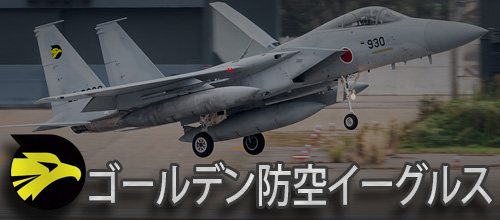
|
|
|
|
|
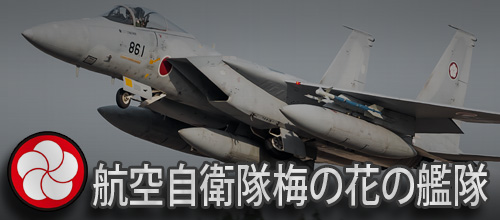
|
|
F-15s on Quick Reaction Alert
Eagles for the Air Defense, part 3; Nyatubaru, November 7, 2019
During the defense of Japanese airspace, the F-15J Eagle plays the leading role in the current situation. These aircraft are scattered throughout the country and can respond to every possible threat 24 hours a day, 7 days a week. Japanese fighter planes have been used more and more often in scrambles in the recent years. Over the past twelve years, Japanese fighter planes have increasingly been used for scrambles. The situation around Japan has deteriorated over the years, as these countries have increasingly invested in their military.
|
|
|
|
|
The F-15J Eagle Pilot School
Eagles for the Air Defense, part 4; Nyatubaru, November 7, 2019
The training of fighter pilots is an important task in every country, because it provides the basis for a successful defense of the national airspace. The 23 Hikotai is responsible for this important training and education task. With the Mitsubishi F-15J/DJ Eagle, the unit has a very powerful aircraft for this mission. Today, the 23 Hikotai is the most important training unit for all fighter pilots in Japan. The unit is based at Nyatubaru Air Base and is responsible for the training of pilots to become a fighter pilot on all types that are active at the Air Force.
|
|
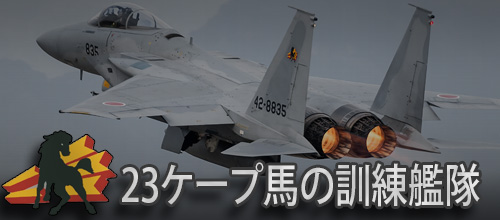
|
|
|
|
|
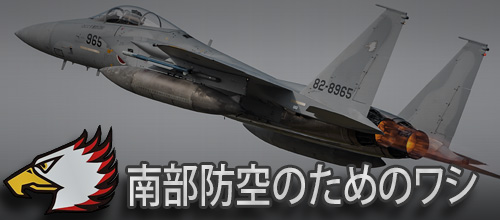
|
|
Photo Reconnaissance with the Eagle
Eagles for the Air Defense, part 5; Nyatubaru, November 7, 2019
Photo reconnaissance is an important task which is currently at the Japan Air Self Defense Force being performed by the specialized RF-4E Kai. Meanwhile, it is known that these aircraft will be phased out in April 2020. Japan therefore needs successor for the Phantom to continue to perform photo reconnaissance tasks. The photo reconnaissance systems with the RF-4 are based on a film camera. This concept has since become a remnant of the last century. There is a large need to replace this heavily outdated photo system.
|
|
|
|
|
Updating Eagles for the Future
Eagles for the Air Defense, part 6; Nyatubaru, November 7, 2019
The F-15s have been the backbone of the aerial defense in Japan for many years. The planes that are still flying around the country are of different versions due to many different updates that have taken place in recent decades. To keep the fleet as deployable as possible, more than a hundred Eagles will be updated. For an update of the Japanese F-15J fleet, the Japanese government needs approval from the US government. The US Department of Foreign Affairs has approved the Japanese request for the upgrade package for one hundred Eagles.
|
|
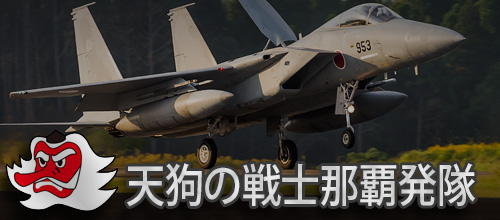
|
|
|
|
|
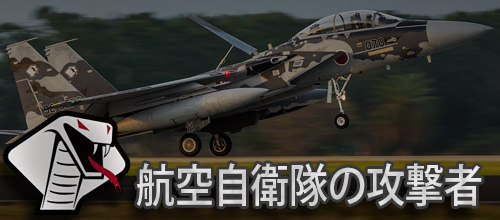
|
|
Training with Aggressor Eagles
Eagles for the Air Defense, part 7; Nyatubaru, November 7, 2019
One of the best known units of the Japan Air Self Defense Force (JASDF) is the Flight Instructor Group (Hiko Kyodogun), which is also known as the Aggressor Group. The F-15J Eagles of the Aggressor Group are painted in many exotic colors according to the modern color schemes of the Russian Air Force and Chinese Air Force. The use of hostile aggressors in a modern air force ensures that the operational fighter pilots of the own air force can train to the maximum and continue to learn because they are repeatedly challenged.
|
|
|
|
|
Designing the Mitsubishi F-2
Mitsubishi F-2 Viper Zero, part 1; Tsuiki, November 5, 2019
The Mitsubishi F-2 is a primary frontline fighter aircraft of the Japan Air Self Defense Force that is deployed in the offensive and maritime role. This characteristic blue combat aircraft look suspiciously like the American F-16 Fighting Falcon. The F-16 has been used as the basis for the development phase of the Mitsubishi F-2. Production of the F-2 started in 1996 and the first aircraft was delivered to the JASDF in 2000. The first 76 aircraft entered service before 2008. A total of 98 produced aircraft were delivered of which were four proto models.
|
|
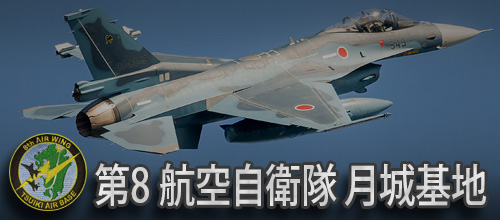
|
|
|
|
|
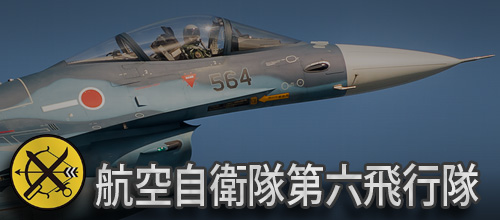
|
|
The Mitsubishi F-2 in Operational Service
Mitsubishi F-2 Viper Zero, part 2; Tsuiki, November 5, 2019
Since the development of the Mitsubishi F-2 began, the Japan Self Air Defense Force (JASDF) has had three operational squadron flying this type. There is also a conversion squadron that ensures the type of conversion in the training process. A number of F-2s are used for testing and by developing the F-2 type in flight. The Japanese F-2 fighter aircraft are easy to recognize by their blue color scheme. The blue scheme is a remarkable color for a fighter. The color is a so-called "offshore camouflage" that is applied to the standard models.
|
|
|
|
|
Disaster Strikes due to a Tsunami
Mitsubishi F-2 Viper Zero, part 3; Tsuiki, November 5, 2019
After the Mitsubishi F-2 was delivered in the period from 2000 to 2008, fate would strike a few years later. A tsunami caused major problems with the F-2 fleet that had a major impact on the type of training. A tsunami caused by a major earthquake in the Pacific Ocean damaged a large part of the Matsushima fleet. After recovery, it was announced at the end of 2018 that Japan will develop a successor for the F-2 in the future. In total, the Japan Air Self Defense Force (JASDF) has received more than 94 Mitsubishi F-2s and has four active units.
|
|
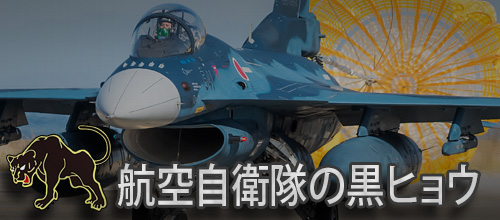
|
|
|
|
|
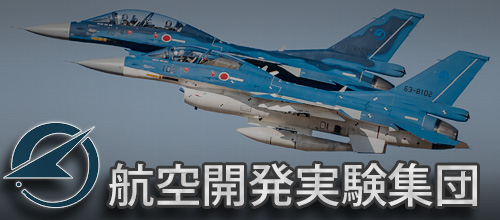
|
|
Development of Military Assets
Development, Testing & Monitoring, part 1; Gifu, November 10, 2019
The development and testing of new equipment and aircraft has become an important part of the Japanese defense industry. This is very important because products are increasingly sophisticated. In addition to aircraft, they also test new electronics and radars and also testing the medical side of aviation. One of the most special units of the JASDF is the Air Development and Test Wing on Gifu Air Base. This unit is responsible for testing prototypes of new aircraft and testing the continued development of existing JASDF aircraft.
|
|
|
|
|
The Air Development and Test Wing
Development, Testing & Monitoring, part 2; Gifu, November 10, 2019
Testing and evaluating new combat aircraft for the Japan Air Self Defense Force is a specialized branch within the Japanese Air Force. The Air Development and Test Wing at Gifu Air Base takes care of these tests and supervises new type introductions from their prototype to operational aircraft at the Japanese Air Force. The largest branch of the Japanese Air Development and Test Command (Koku Kaihatsu Jikken Shudan), is the test unit named Air Development and Test Wing (AD&TW) (Hikou Kaihatsu Jikken Dan) on Gifu Air Base.
|
|
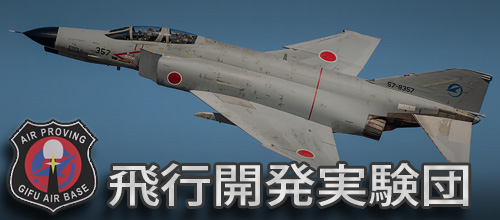
|
|
|
|
|
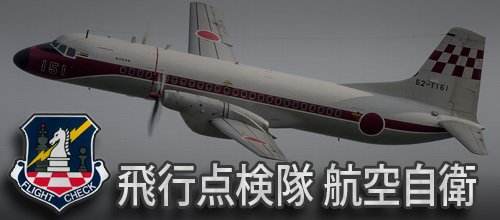
|
|
Electronical and Tactical Operations
Development, Testing & Monitoring, part 3; Iruma, November 3, 2019
To check and inspect the Japanese radar and airport installations, the Flight Check Squadron was formed. Later, an ECM squadron for electronic warfare would also emerge from this squadron. A third electronical observation unit was also withdrawn from these units for monitoring Japanese airspace with aircraft. One of the best known units of the special squadrons on Iruma is the Flight Check Squadron (Hiko Tenkentai). The Flight Check Squadron is a unit that inspects all JASDF air security facilities and air traffic control facilities.
|
|
|
|
|
The Second Tactical Airlift Group
The Japan Air Support Group, part 1; Iruma, November 3, 2019
The only unit in Japan that still flies with the nowadays outdated Kawasaki C-1 is the 402 Hikotai which is part of the 2nd Tactical Airlift Group. This transport unit is currently based on Iruma Air Base and mainly works with the airborne soldiers of the 1st Airborne Brigade of the Japan Ground Self Defense Force. The 2TAG is based on Iruma Air Base. This unit falls under the command of the Japanese Air Support Group. The headquarters of this group is based in Fuchu in Tokyo. All transport units are under the command of this group.
|
|
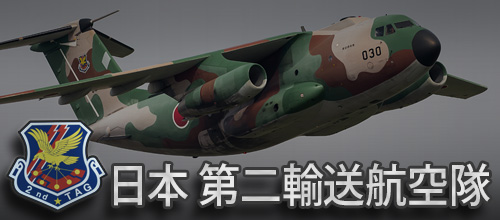
|
|
|
|
|
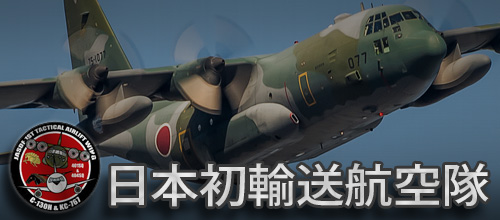
|
|
The First Tactical Airlift Group
The Japan Air Support Group, part 2; Komaki, November 10, 2019
The Japanese 1st Tactical Air Group is based on Komaki Air Base near the city of Nagoya. This unit consists of two squadron equipped with the Lockheed C-130H Hercules for tactical transports and the Boeing KC-767J for strategic tanker tasks. The tankers in particular play an important role for the future of the JASDF. The 1TAG of the JASDF is based on Komaki Air Base near the Japanese city of Nagoya and Komaki in the Aichi prefecture. The 1TAG, just like the other transport units, are commanded by the Air Support Group.
|
|
|
|
|
The Third Tactical Airlift Group
The Japan Air Support Group, part 3; Komaki, November 10, 2019
The third large airbase where the Japanese transport aircraft are based is Miho Air Base in the southwest. At this air base, the Kawasaki C-2 is being introduced for the first time as the newest transport aircraft of the Japan Air Self Defense Force. There is also a transport and training unit based here that flies the T-400. The third transport wing that falls under the command of the Air Support Group is the 3TAG. This unit is currently based on Miho Air Base in the southwest of the country at Sakaiminato in the Tottori Prefecture.
|
|
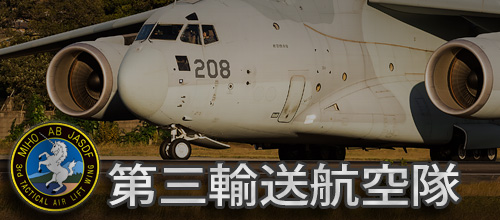
|
|
|
|
|
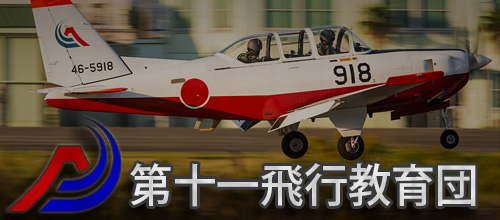
|
|
The Elementary Pilot Training
The Japanese Pilot School, part 1; Shizuhama, November 1, 2019
The students who are selected in Japan to become a fighter pilot in the Air Force start their elementary pilot training at Shizuhama Air Base or Hofu Air Base. The small Fuji T-7 training aircraft are based at these airfields for the pilot training. During the training at these airports, all basic skills are trained by the pilots. In the middle of Japan is the small air base Shizuhama Air Base located which is also known as Yaizu Air Base. At this airbase, pilots receive elementary training for the Japan Air Self Defense Force (JASDF).
|
|
|
|
|
The Advanced Pilot Training
The Japanese Pilot School, part 2; Hamamatsu, November 1, 2019
The Japanese advanced pilot training takes place at Hamamatsu Air Base. For this training, the 1st Air Wing has the Kawasaki T-4 Jet Trainer to train the students. Students will be judged at Hamamatsu Air Base whether to continue on the fighter planes or whether to continue on another type of Japanese Air Force. Hamamatsu Air base is located in the south of the Japanese main island of Honshu. The 1st Air Wing of the Japan Air Self Defense Force (JASDF) is based on this airbase. This wing is the most important training wings in Japan.
|
|
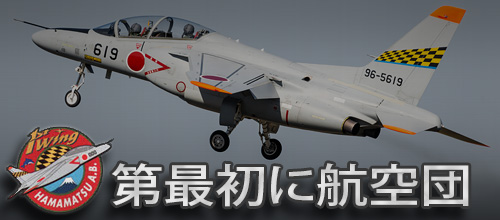
|
|
|
|
|
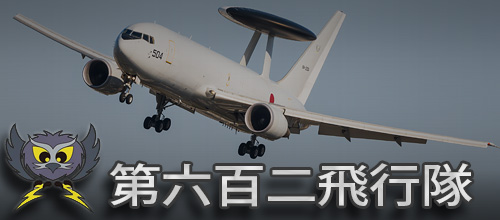
|
|
Guarding the Japanese Airspace
The Japanese Early Warning Fleet; Hamamatsu, November 1, 2019
The Japanese Early Warning fleet today plays a very important role in monitoring and guarding Japanese airspace against unwanted intruders. The fleet consists of nine E-2C Hawkeye radar aircraft and four Boeing E-767 radar aircraft. These aircraft monitor Japan's airspace 24 hours a day 365 days a year. The history of the Japanese early warning aircraft dates back to the Cold War. Japan has become a military partner of the United States since World War II and is not far from the Soviet Union in Asia which is a large treath for Japan.
|
|
|
|
|
Flying in the Japanese Navy
Japan Maritime Self Defense Force, part 1; Ozuki, November 8, 2019
The Japanese navy and the associated naval aviation service is one of the largest organizations of the Japanese armed forces. The units of the aviation service operate from the Japanese naval airfields and from the Japanese navy ships. Every pilot from the aviation service starts his career at Ozuki during the training. One of the largest aviation departments of the Japanese government is the Marine Aviation Service of the JMSDF. The aviation branch of the Japanese navy contains all aircraft and helicopters that are used in the navy.
|
|
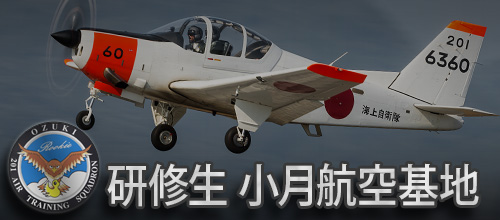
|
|
|
|
|
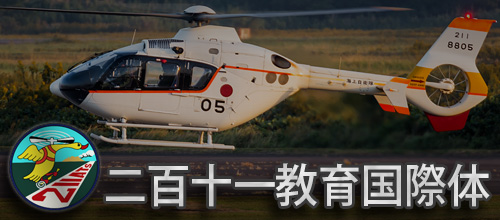
|
|
The Advanced Pilot Training School
Japan Maritime Self Defense Force, part 2; Kanoya, November 6, 2019
After the pilots have completed their elementary training at Ozuki Air Station, they continue in the specialized advanced pilot training. Some of the students will specifically train here to become a pilot on one of the transport aircraft or patrol aircraft. The other part of the students will be trained to fly with helicopters. The recruted student pilots of the Japan Maritime Self Defense Force (JMSDF) who will continue their career on one of the planes will be relocated to 202nd Educational Air Corps after their elementary training at Ozuki Air Station.
|
|
|
|
|
Helicopter Operations at Sea
Japan Maritime Self Defense Force, part 3; Kanoya, November 6, 2019
The backbone of the Japanese maritime helicopter fleet is the Mitsubishi SH-60 Seahawk. From the beginning of the 1990s, this type entered service with the Japanese navy and since that time it is the backbone of the navy. The SH-60 Seahawk quickly turned out to be an excellent helicopter that can be used in many ways. The SH-60J Seahawk of the JMSDF is the most important patrol helicopter of the navy. The helicopter is based on the Sikorsky SH-60B which is also used by the US Navy and is built under license by Mitsubishi.
|
|
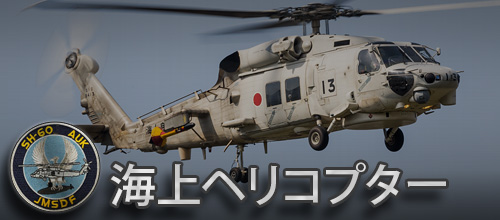
|
|
|
|
|
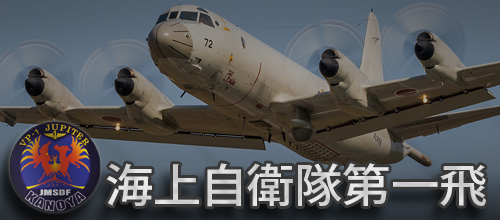
|
|
On patrol with the P-3C Orion
Japan Maritime Self Defense Force, part 4; Kanoya, November 6, 2019
One of the most characteristic patrol aircraft of the Japanese navy is the Lockheed P-3C Orion. This patrol aircraft plays an important role in the navy in protecting Japanese waters against intruders such as ships and submarines. The Orion has been the backbone of the patrol fleet for years and is quickly being replaced. The P-3C Orion still plays the most important role when it comes to defending the Japanese coastline and territorial waters. The P-3C of the JMSDF was built in Japan under license by Kawasaki Heavy Industries.
|
|
|
|
|
The Kawasaki P-1 Replacing the P-3
Japan Maritime Self Defense Force, part 5; Atsugi, November 11, 2019
The Kawasaki P-1 has meanwhile entered service within the Japan Maritime Self Defense Force as a replacement for the outdated P-3C Orion. On March 26, 2013, the JMSDF took delivery of the first two operational Kawasaki P-1 aircraft. The first unit to fly with the P-1 was Patron 3 at Atsugi Air Station. Now that after more than forty years of loyal service, the Kawasaki P-3C Orion is due for replacement, the Kawasaki P-1 is introduced in Japan as the successor to this reliable patrol aircraft. Japan used more than one hundred Orions.
|
|
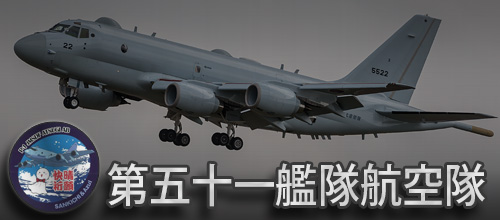
|
|
|
|
|
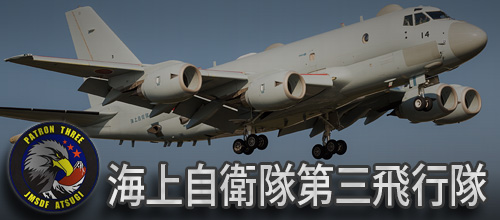
|
|
The Kawasaki P-1 on Patrol
Japan Maritime Self Defense Force, part 6; Atsugi, November 11, 2019
In Japan, the Kawasaki P-1 is currently being structurally introduced by the Japan Maritime Self Defense Force for the aviation branches. Despite attempts by the Japanese manufacturer Kawasaki Heavy Industries, no foreign customers are yet attached to the P-1. The first two units in Japan already fly with the type. After the prototype of the Kawasaki P-1 was delivered to the 51st Fleet Air Squadron at Atsugi Air Station in 2013, the type went into production for the Japan Maritime Self Defense Force (JMSDF) with the goal to built 70 aircraft.
|
|
|
|
|
Flying Boats at Iwakuni Air Station
Japan Maritime Self Defense Force, part 7; Iwakuni, November 8, 2019
The maritime airbase Iwakuni Air Station is home to the Japanese 31st Fleet Air Wing which is part of the Japan Maritime Self Defense Force. This unit flies with several versions of the P-3 Orion, the EH101 Merlin and uses the US-2 flying boat. There are also US aircraft from the US Navy and the Marines based on Iwakuni. The Japanese 31st Fleet Air Wing (Di Sanshi Hangkong Jituan) (31 FAW) is part of the JMSDF. The unit falls under the Japanese Navy's aviation command and is based on Iwakuni Air Station. The unit is led by an assistant admiral.
|
|
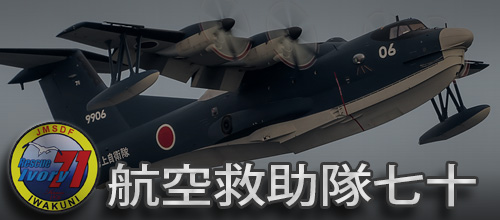
|
|
|
|

|







